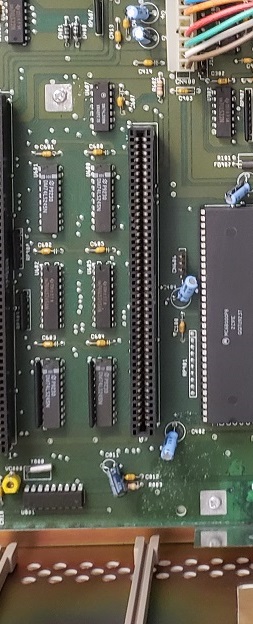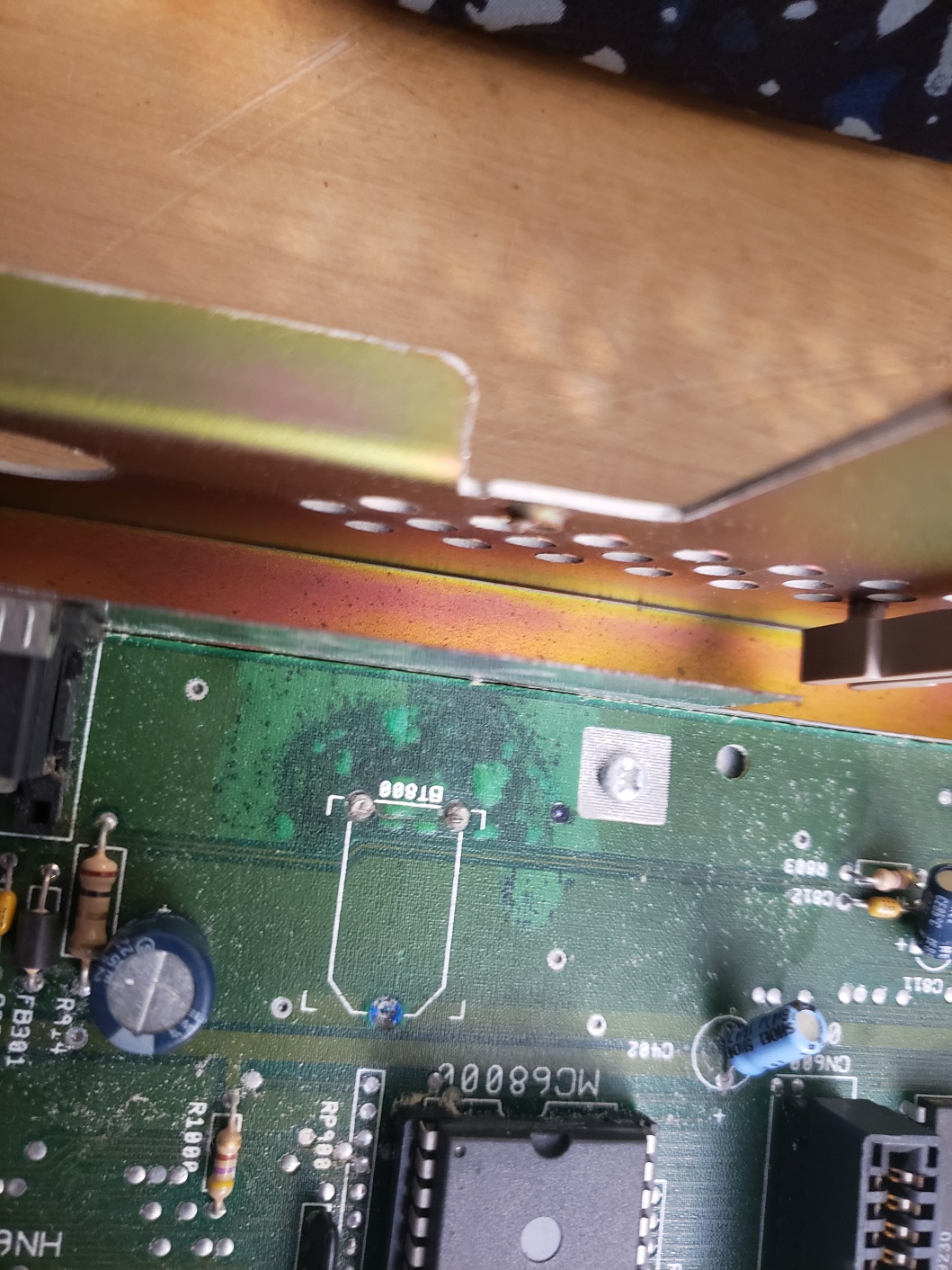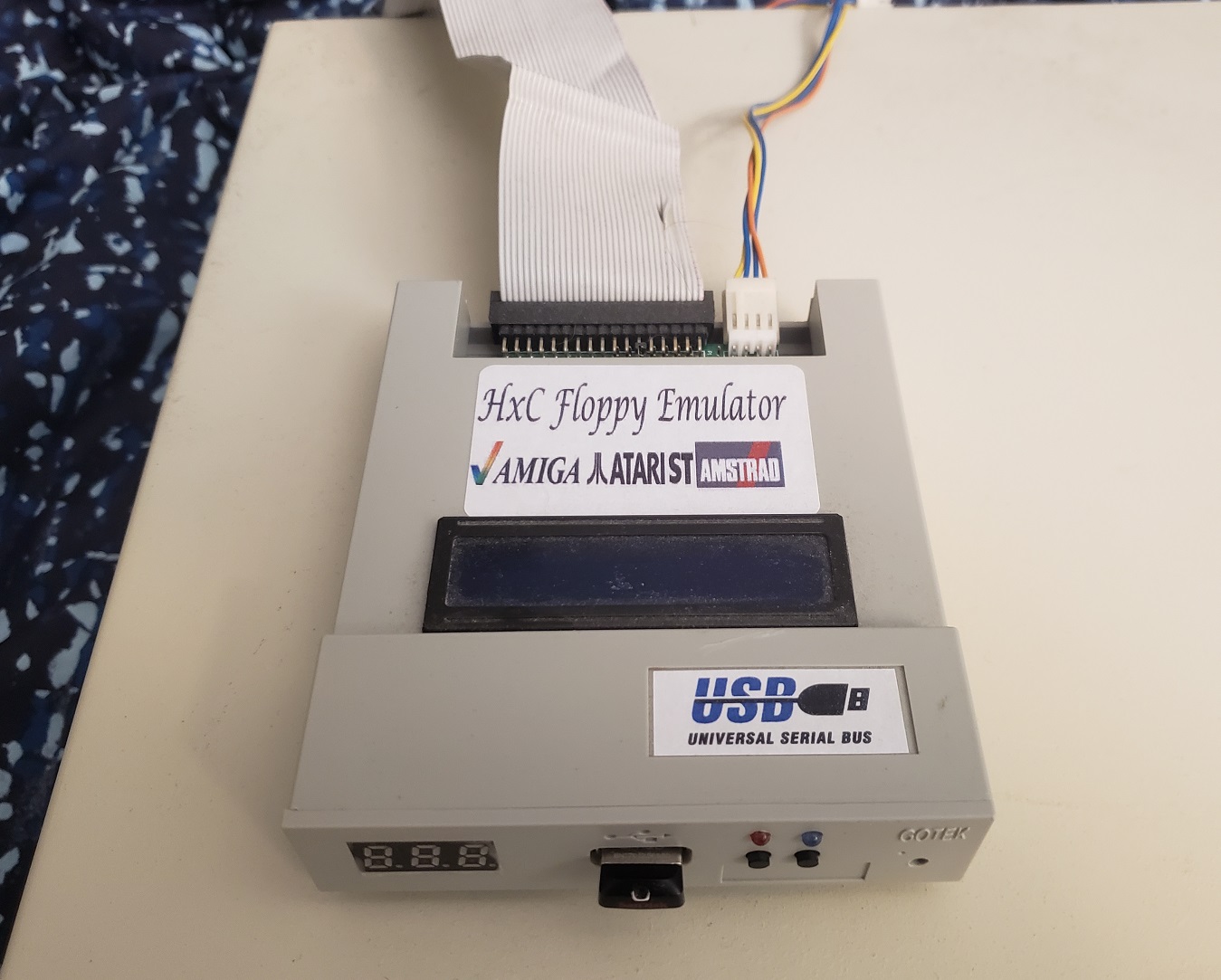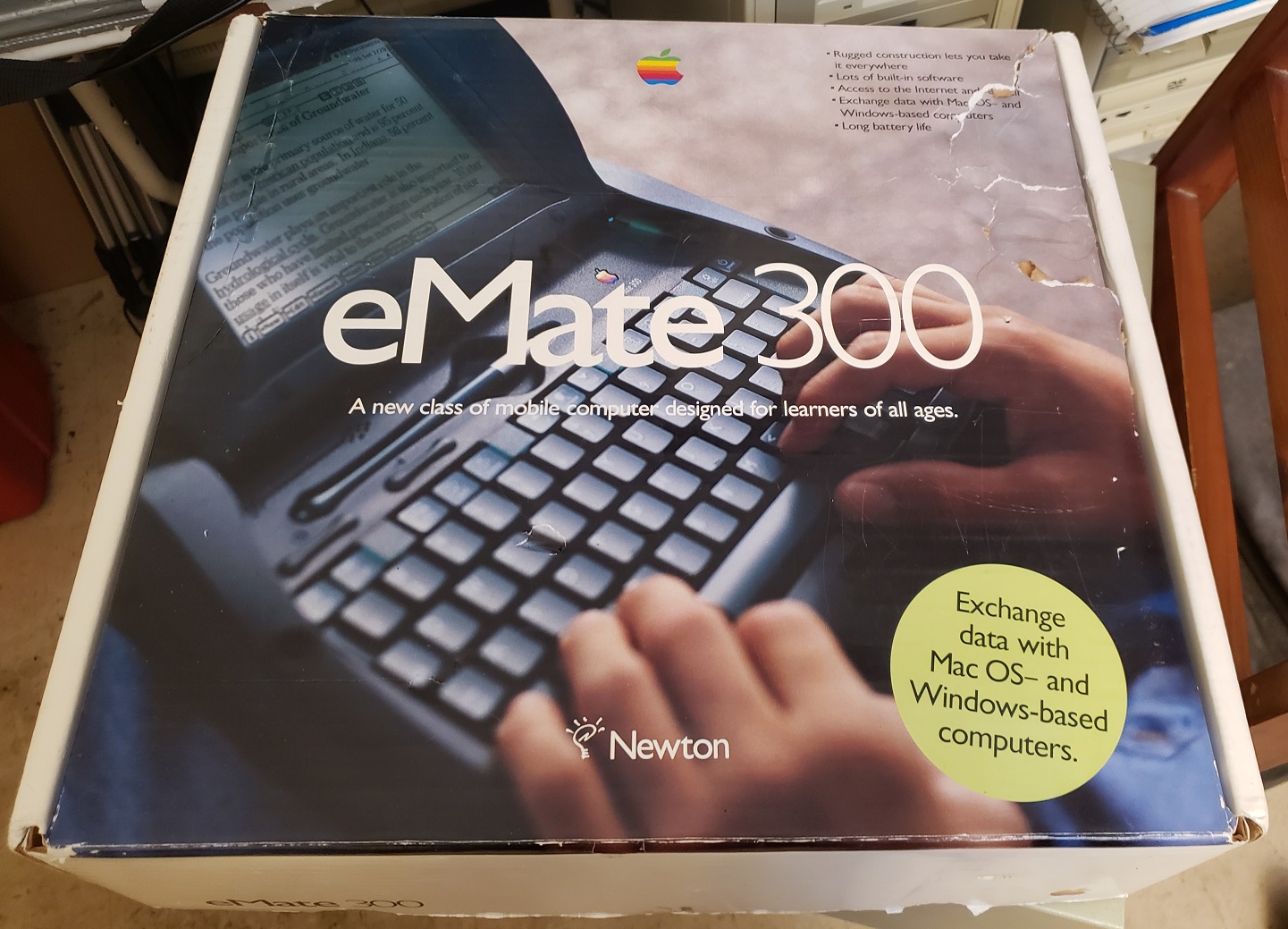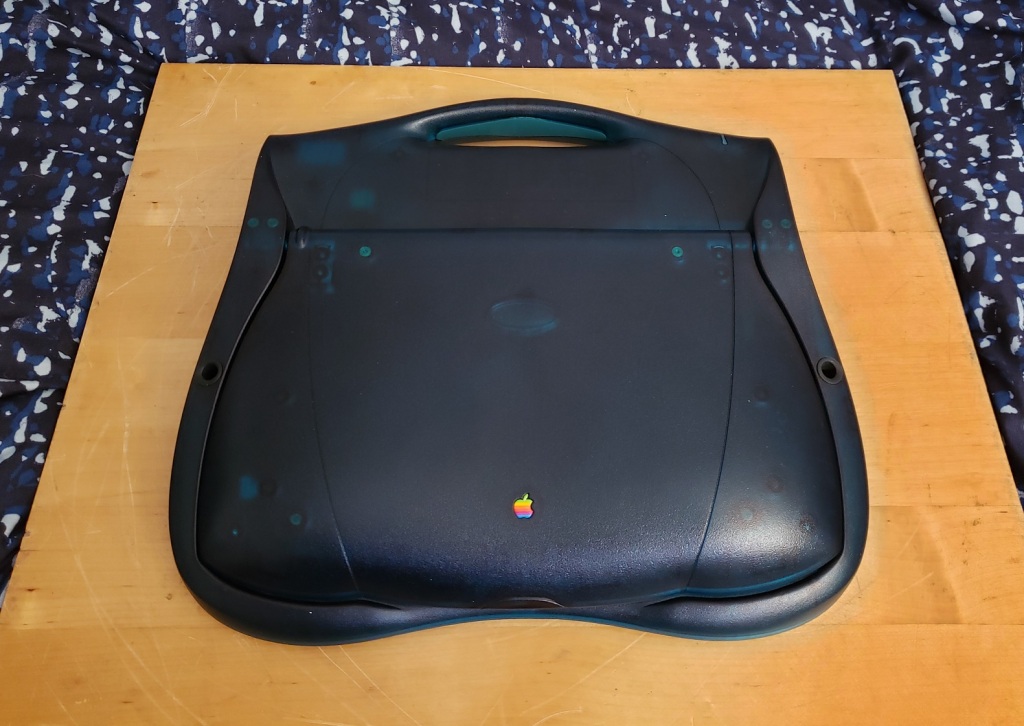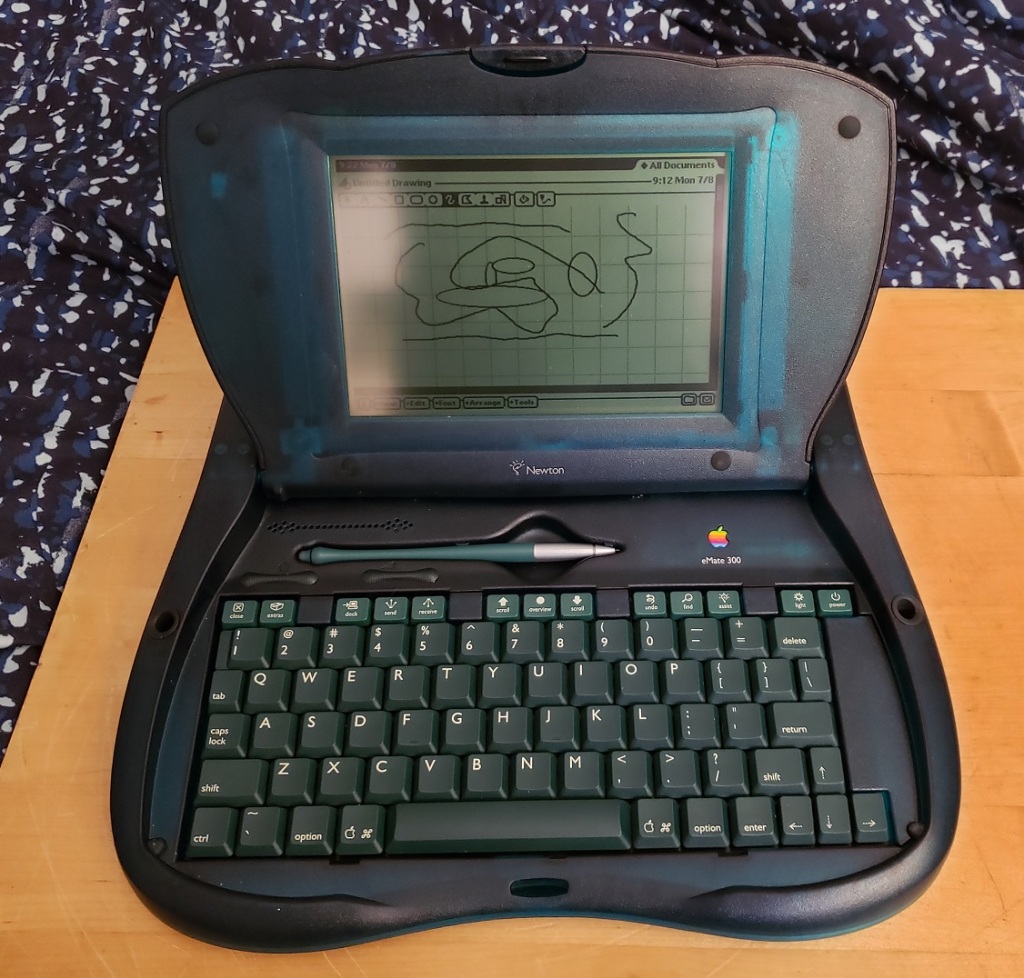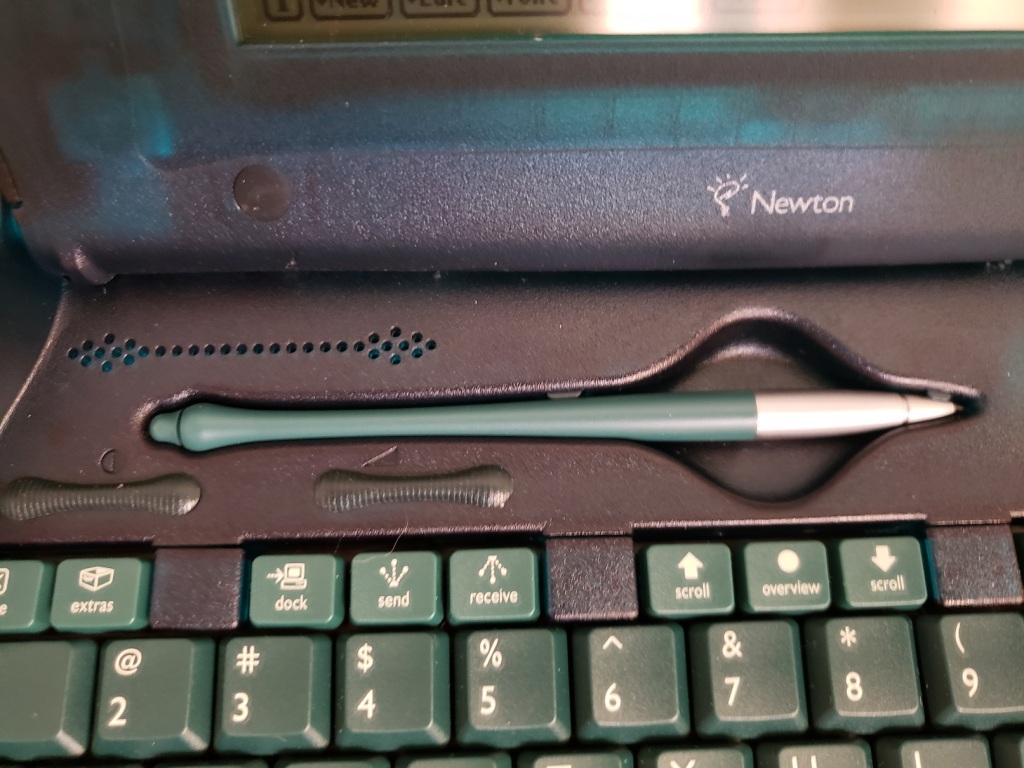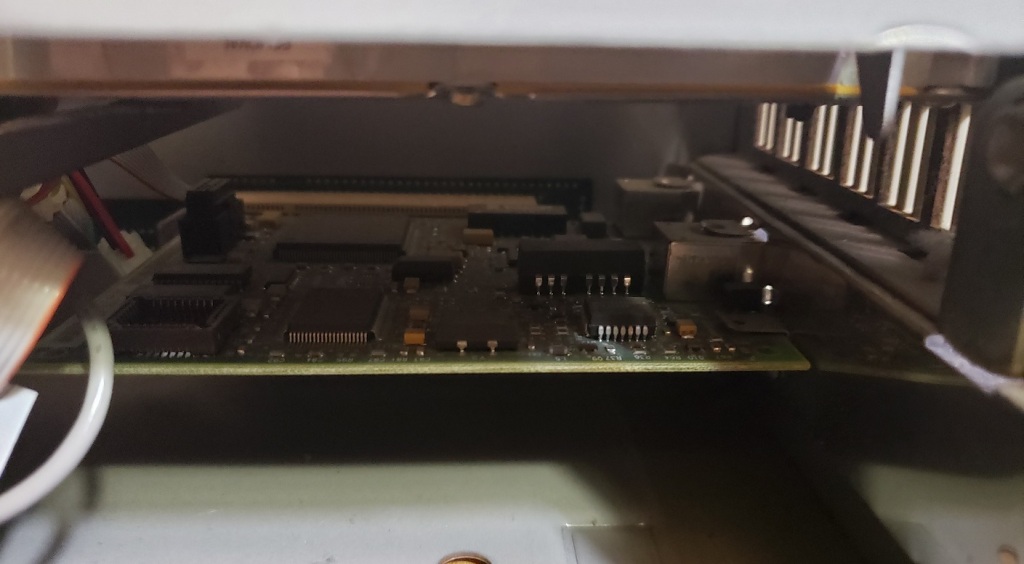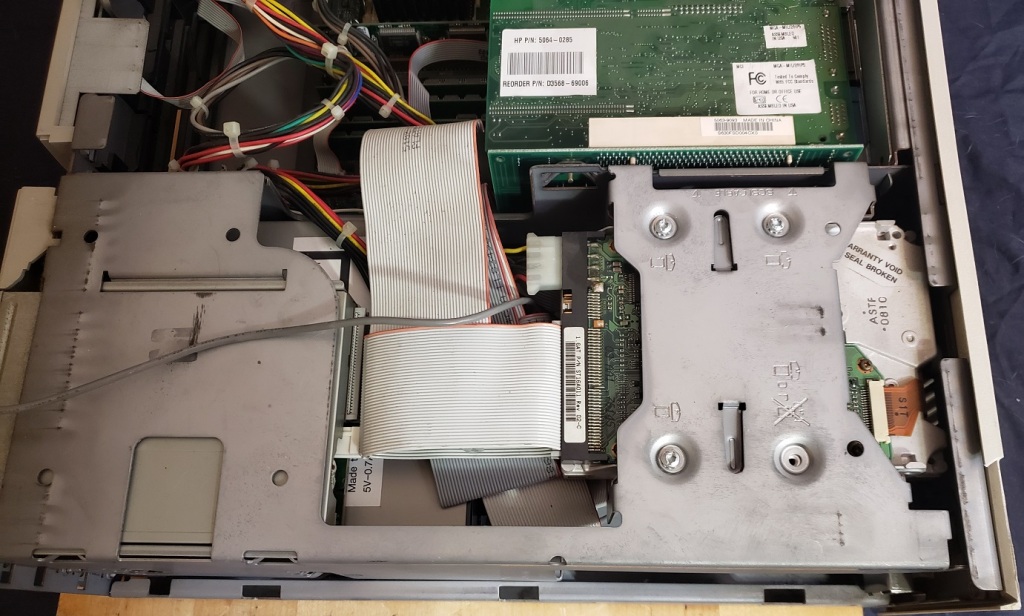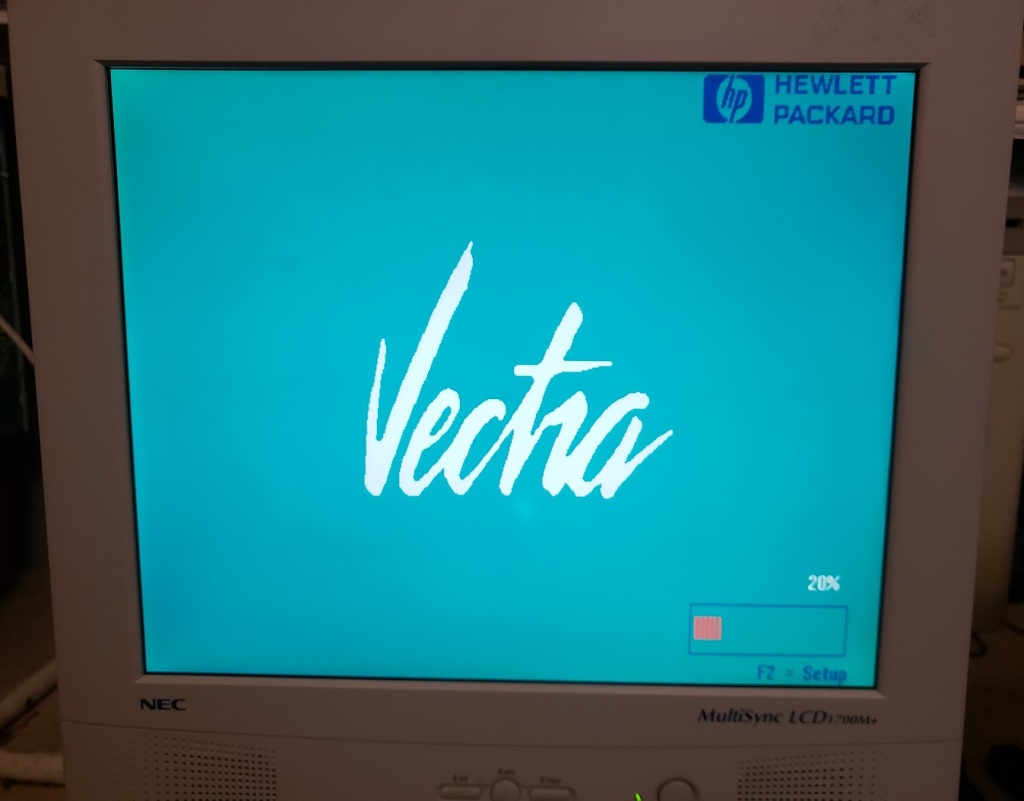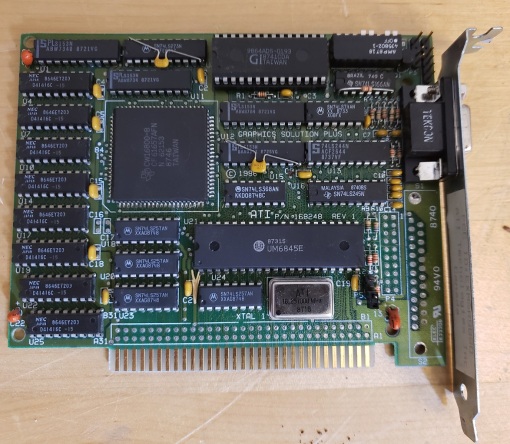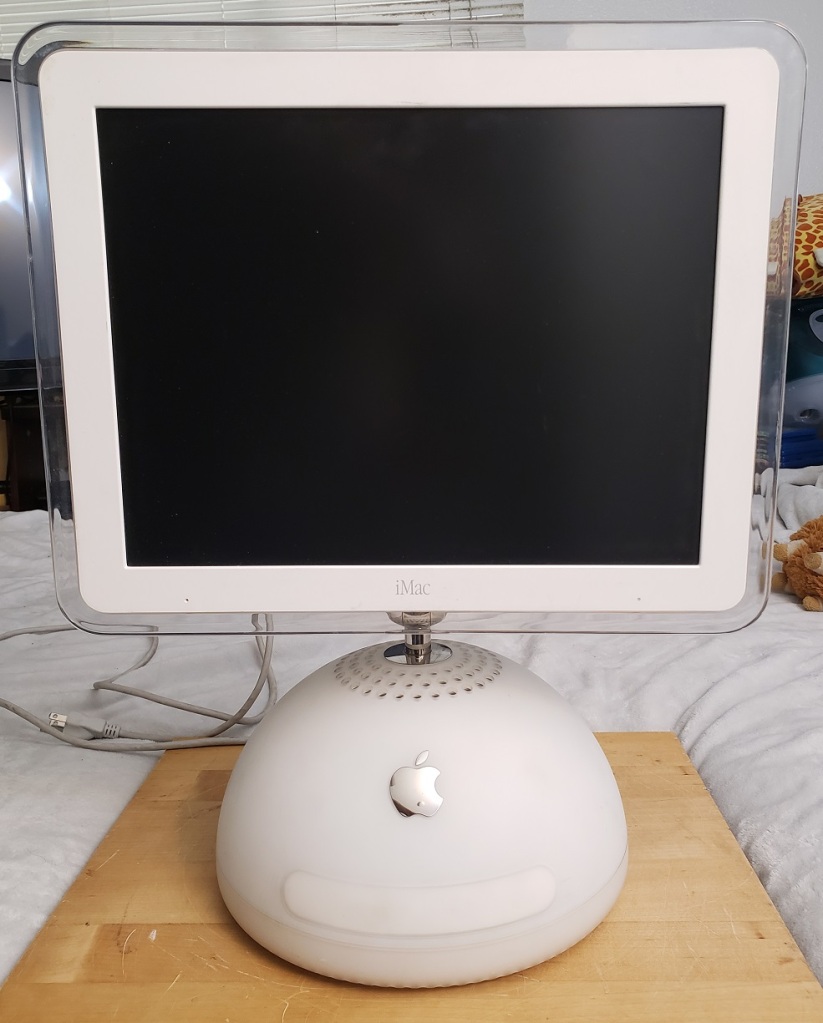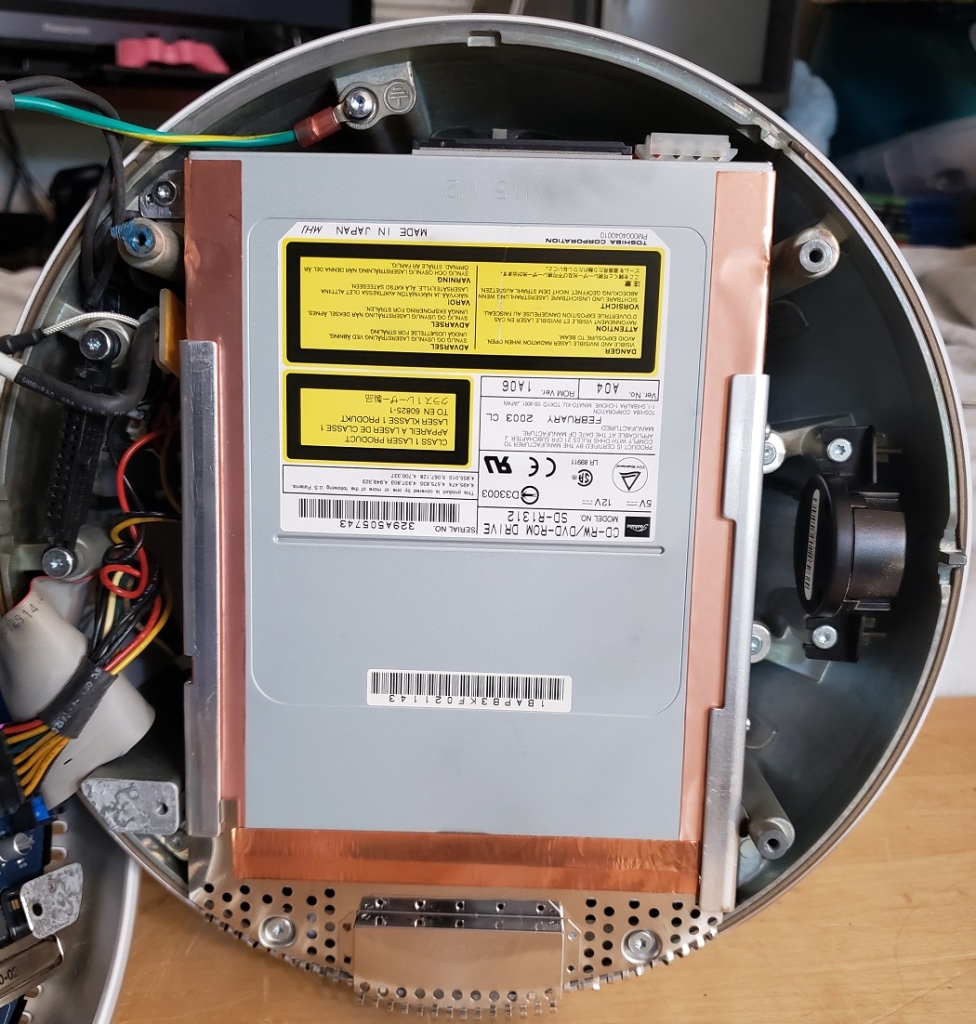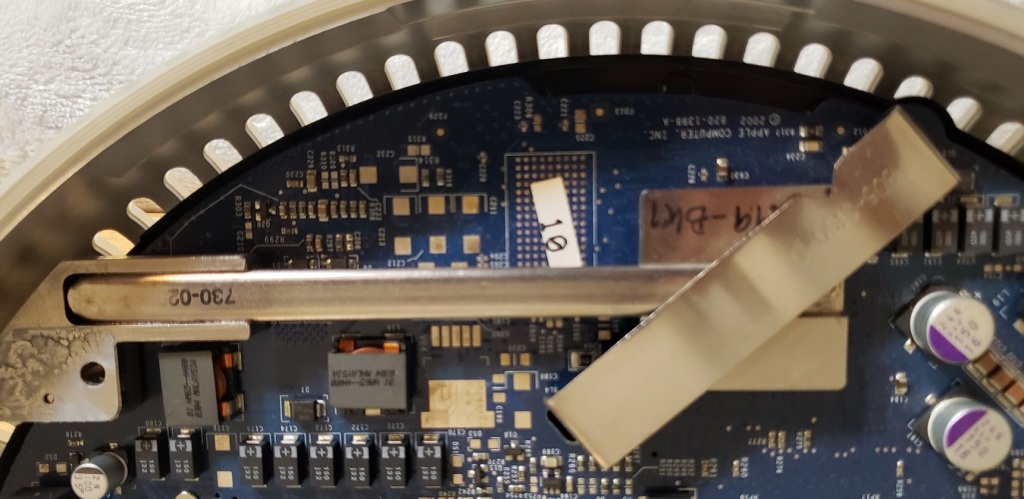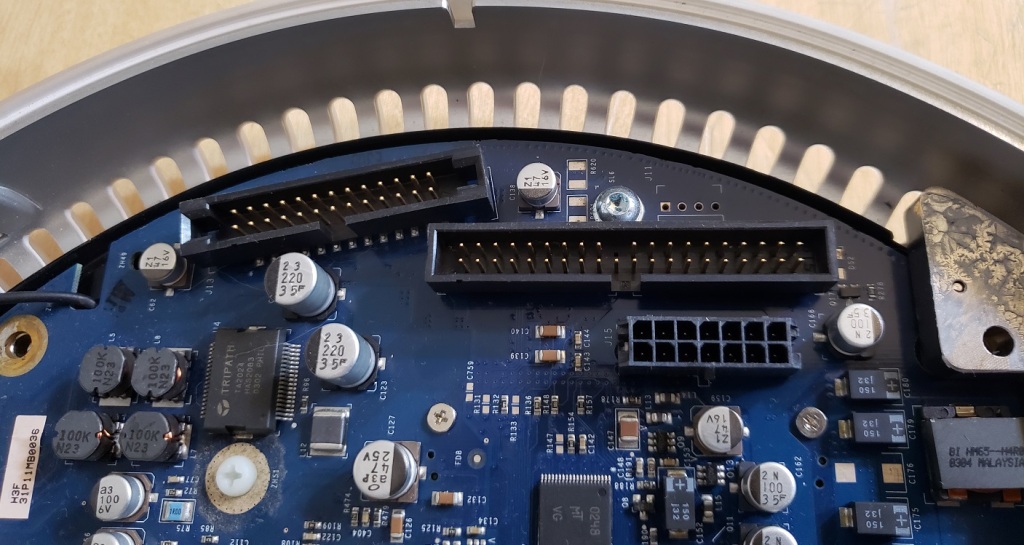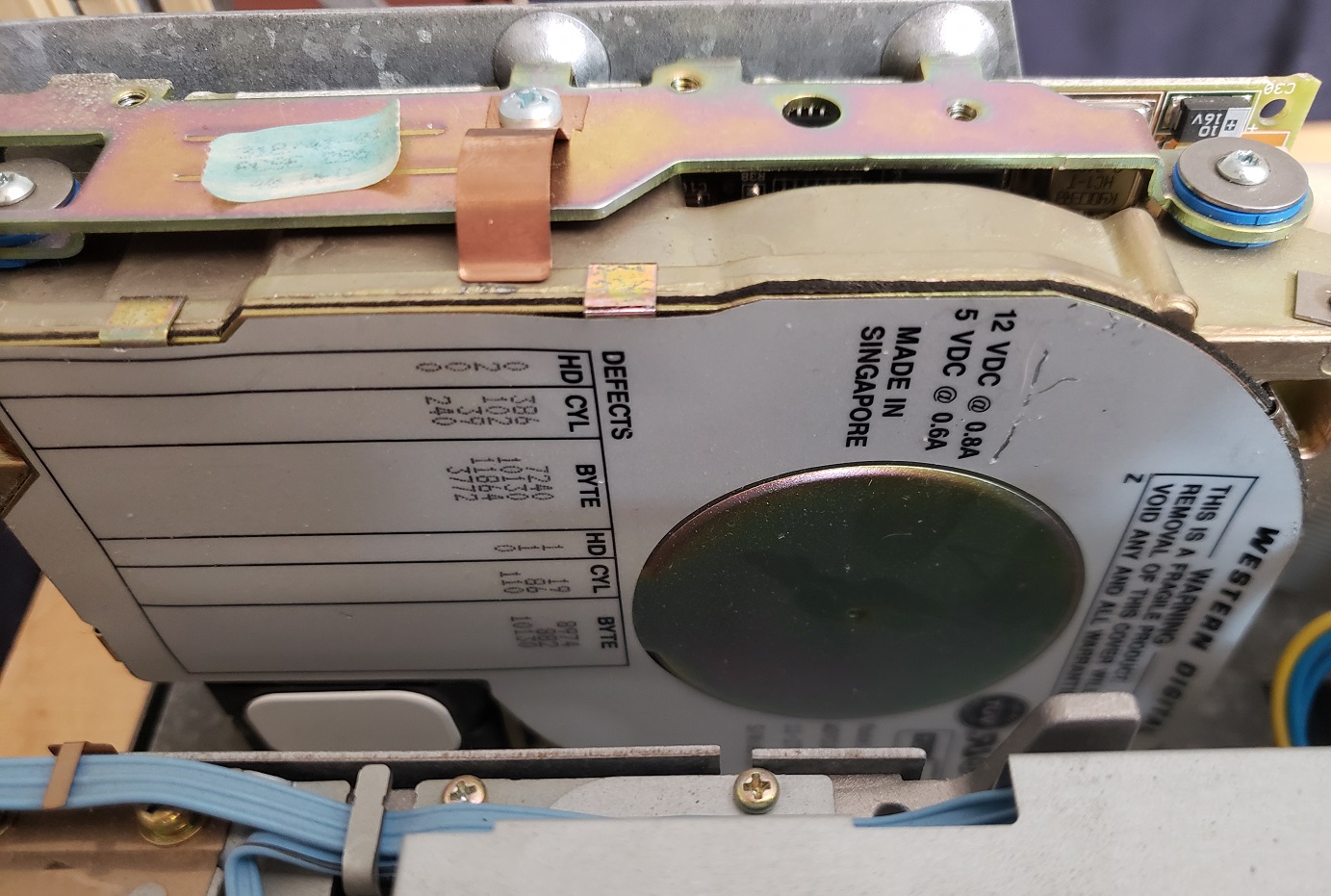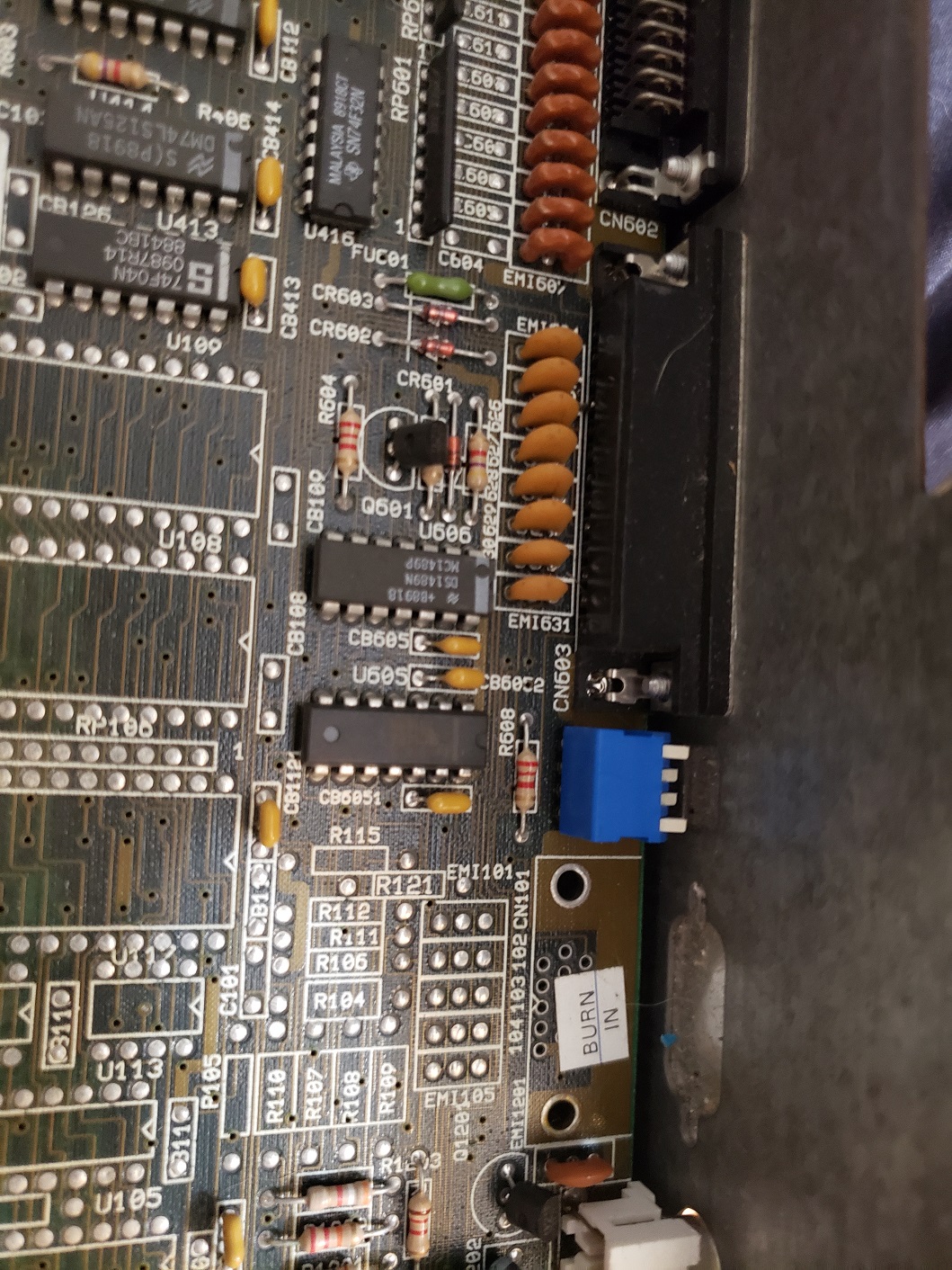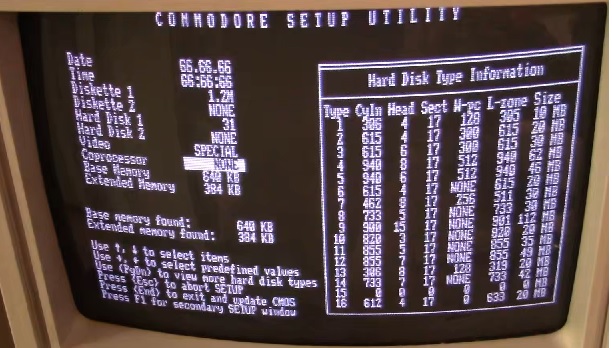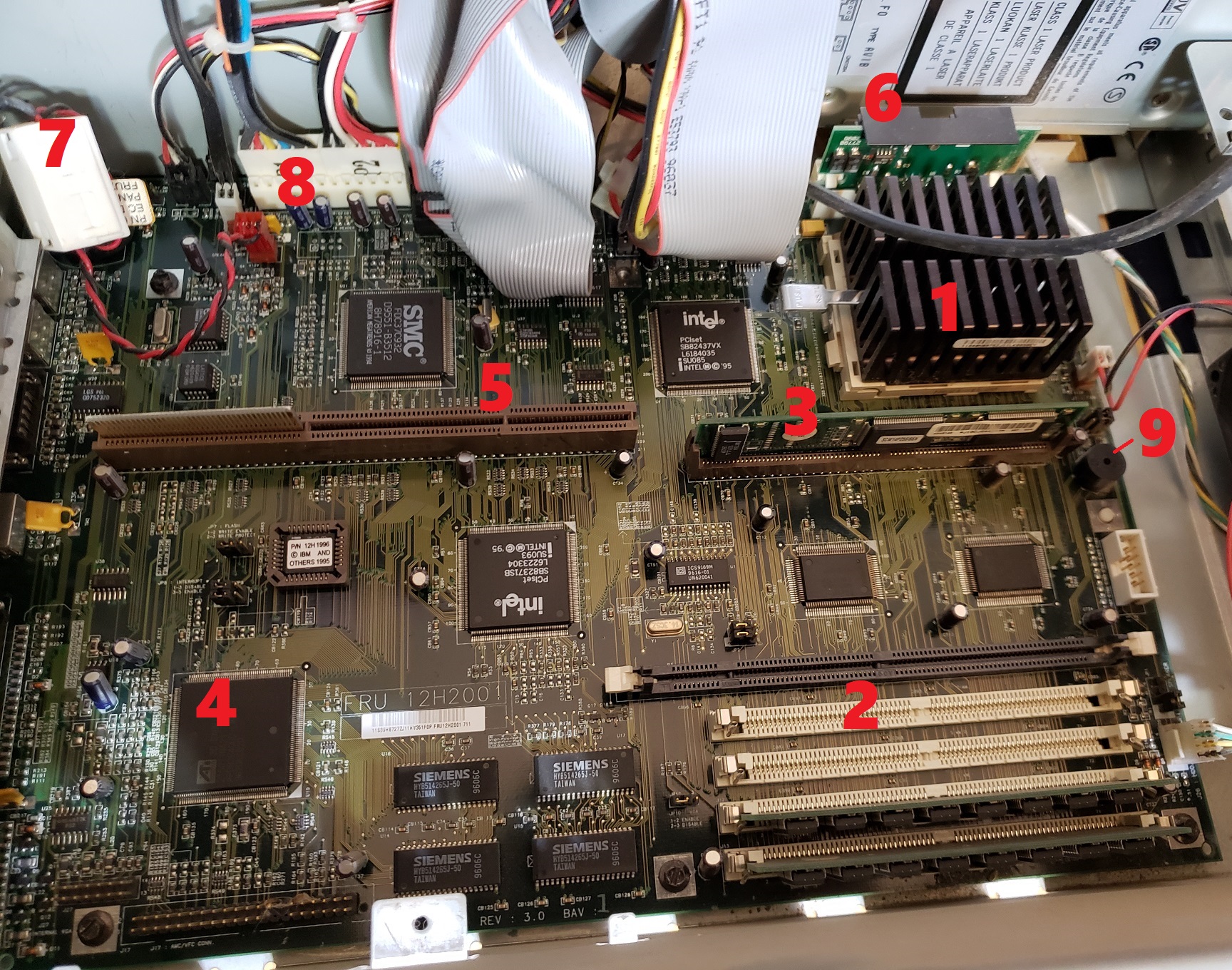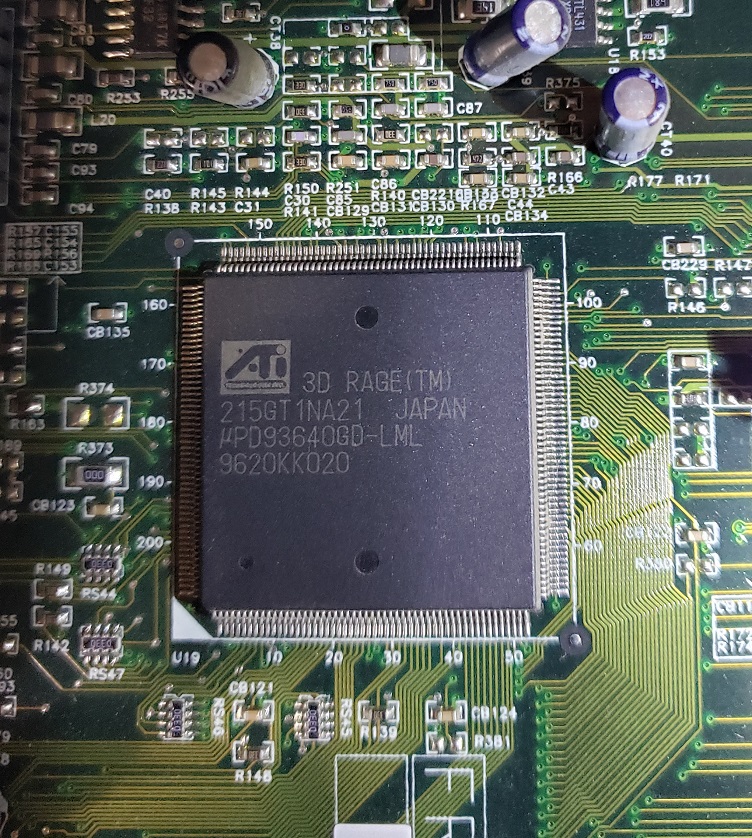Today we will be taking a look at a pretty solid 286 PC from the late 1980s. The VTI Turbo 55 although not noticeable at first is actually a Samsung branded PC which becomes obvious if we take a look at the sticker on the back or at the motherboard itself. First though let’s take a look at the front of the case.
On the front we have a keyhole for locking the computer along with two LEDs for power and HDD activity. Below this is what looks like a third LED at first but its actually a slightly recessed reset button. It’s a double-edged sword though as the recessed button does make it almost impossible to accidentally reset the PC it also makes it a potential pain if you do want to use the button to reset as you’ll need a pen or otherwise small object to use to press the button. There is no power button on the Turbo 55 so turning the power on and off is performed via a switch on the power supply.
To the right of these LEDs and reset we have two 5 1/4 drive bays. Mine are occupied with a 1.2MB 5 1/2 floppy drive as well as a 1.44MB 3 1/2 floppy drive. As I have the original box with the original specs printed on it seems this PC came stock with only the 1.2MB 5 1/4 drive. The 1.44MB drive was a later addition from the previous owner. Two bays do not leave much room for expansion but for a 286 class PC you’re perfectly fine with a pair of floppy drives. If you really wanted to you could always track down a dual floppy drive and use the second bay for a CD-ROM drive or something along those lines.
The Turbo 55 is one of those PC’s that have the keyboard connector in the front which I’m not the biggest fan of though this is a largely personal preference
The keyboard itself is pretty well made and feels like a model M with nice clicky keys. There is also an XT-AT switch on the underside in case you wanted to use it with an even older PC in your collection.
flipping the case around let’s take a look at the back.
You may notice the power supply looks well…incorrect. You would be right to think that and we will address that in a moment but first we will take a look at the built-in I/O ports. From left to right we have dual serial ports followed by a parallel port. Not a lot but as far as 286 PCs go it’s really nice to have anything built-in. Next to the parallel port we also have a curious switch with M below and C marked above. According to the documentation I could find on this model this is a monitor select switch with the M standing for mono and the C for color. The switch made no change as far as I could tell but I was using a later VGA card when I tested it so maybe it only works with CGA cards. To the right of this we have eight expansion slots with one being currently occupied by the EGA card.
Before opening the case and taking a look at the inside we can quickly talk about the power supply. The original power supply was a Han One HN-200c which when I received this computer was unfortunately completely dead.
In my foolishness though I ended up throwing it away since I just assumed it was a run of the mill AT power supply. In actuality the dimensions are a bit non-standard. The power supply I have installed currently is a newer ATX supply with an AT adaptor. It doesn’t fit quite fill the entire space so I just used some foam to fill the gap. Due to the lack of a power button I had to make sure the replacement PSU had a physical on/off switch.
The power connector on the motherboard itself is AT and any AT power supply (or adaptor) will connect to it just fine though the original HN-200C power supply did not have a split AT connector like most standard ones do.
With that out of the way lets take a look inside this PC.
Before we take a look at the motherboard lets take a look at the two expansion cards that were installed when I originally acquired this PC. If you look at the image above you’ll notice the hard drive is mounted in a vertical orientation to the right of the floppy drives.
The hard drive is run off the 8-bit controller card above and is the uncommon XT-IDE or XTA interface. This is a seldom used interface only supported by a hand full of hard drives. The Commodore Colt I reviewed some time ago also used this interface for its hard drive. The hard drive attached is a Microscribe XTA hard drive of 40MB size. I do believe this controller card and hard drive are original to this PC. Unfortunately after several hours I could not get the VTI Turbo 55 to work with any 16-bit IDE controller or SCSI hard drive controller despite the PC having 16-bit ISA slots. Fortunately for me though the stock XTA controller and the hard drive still are functional.
The only other expansion card installed was the video card.
The video card was an ATI EGA Wonder 800. I couldn’t find much information on this card but ATI was known to make some of the better cards of the time. The EGA 800 is also known to support extended EGA text and graphics modes as well as 16 color VGA modes. For convenience and due to my lack of a proper EGA monitor I replaced the card in my Turbo 55 with a slightly later 16-bit ATI VGA card.
Now let’s take a look at the motherboard itself.
The motherboard seems to be a Samsung AT 286-12 AKA SD 550 with eight ISA slots, two 8-bit and six 16-bit.
1 ) CPU – The CPU is an AMD branded 286-12 running at 12MHz. Interestingly this 286 is the N80L286-12 which is the lower powered variant running at 2.89W as opposed to 3.15 or 3.3W. the 286-12 was along with the 286-16 the quintessential and most common 286 CPU’s. Although fast enough to trigger issues with the more sensitive games meant for a slower 8088 when paired with decent VGA video card the 286-12 should have enough muscle to adequately run some slower paced VGA titles, specify point and click adventure titles.
2 ) FPU – As in most cases, my Turbo 55 came with an empty FPU socket and is a completely optional addition. For my Turbo 55 I chose to add a 287XL FPU. Unlike adding a standard 287-12 which would run at half the speed of the installed 286 (6MHz) the 287XL is actually a modified 387 FPU and should run at the full speed of the CPU which in this case is 12MHz. As I always feel obligated to mention the 287 regardless of its running speed will probably find very little use in this PC as very few games of the era took any advantage of a math co-processor chip. I did however find a CAD program installed on the hard drive which would be an application of the era that would have benefited from this upgrade.
3 ) RAM – My Turbo 55 came with a full 1MB of memory on the motherboard though from what I can see on the box 640KB and 512KB options were available. 1MB would be more then enough for a 286 class PC such as the Turbo 55 and more RAM could always be added via ISA memory cards such as the Intel Above Board if so desired.
Half of the RAM chips on the motherboard are directly soldered on while the other half are socketed.
4) Floppy connector – The floppy controller is built-in and supports up to 1.2MB and 1.44 high density floppy drives.
5) Power connector – standard AT power connector.
The serial and parallel ports can be disabled via the jumpers 11 through 14 located above the RAM while wait states can be set from 1 to 0 via jumper 21 located under the 5 1/4 bays. When I set my wait states to 0 I noticed a significant speed increase but unfortunately this created many stability issues making the machine virtually unusable.
The VTI Turbo 55 is a capable 286. It can be argued that the 286 is a fairly useless CPU for modern retro PC enthusiasts as they are to fast for earlier games while for later titles a 386 can run everything a 286 can but vastly better. I personally still find a certain charm in running a 286 system and the Turbo 55 does in my opinion make a fine 286. The 12MHz speed gives you some wiggle room for playing games and with the right video card even lets you play some slower paced VGA titles just fine. 1MB of RAM is just about perfect for the time and considering the CPU you’ll likely not feel the need to play any games requiring more than the on board 1MB of memory. If you do there is always the option to add more memory via an expansion card.
Most of my negatives of the Turbo 55 are fairly minor such as the frontal keyboard connector or the unnecessarily, at least in my opinion, recessed reset button. The biggest issue I had with the Turbo 55 was the difficulty in adding a different type of hard drive controller. XTA is a very limiting hard drive interface considering it only works with a handful of now 25+ year old hard drives of limited capacity. I tried multiple 16-bit ISA IDE controllers and drives as well as multiple SCSI controllers and drives and found none to work. This does seem to be an issue common to some 286 class motherboards and unfortunately this seems to be one of them. I did not test a modern XT-IDE controller but hopefully maybe one of these would work as a hard drive replacement.







































































